In today’s dynamic market environment, the quality of leads a business generates can significantly impact its growth trajectory and overall success.
Its not just about lead generation as a business, its about fostering connections that are both relevant and likely to convert into loyal customers. But what does lead quality truly entail?
This concept extends beyond simple demographic targeting, encompassing a deeper understanding of potential customers’ needs and behaviors that forms the basis for lead qualification.
Moreover, maintaining and improving the quality of these leads is a continuous challenge that requires strategic thinking and sophisticated tactics.
As businesses strive to navigate the complexities of lead management, it becomes crucial to implement proven strategies to not only attract but also maintain and enhance the quality of leads.
Through this article, we will explore various methods—from leveraging advanced analytics to refining sales funnels—that ensure your lead generation efforts yield the best possible outcomes, thus securing a sustainable and profitable future for your business.
Introduction to Lead Quality: What Does It Really Mean?

In my experience, the essence of lead quality hinges on how closely a lead mirrors the ideal customer profile, coupled with their level of intent.
A good quality lead is not just a random person who shows interest in your service or product; rather, it’s someone who embodies the characteristics and needs of your ideal customer.
These leads are the ones who are most likely to engage, convert, and remain loyal to your brand.
Conversely, a bad quality lead deviates significantly from this ideal profile. Such leads often surface when targeting is too broad or the criteria for lead generation are not well-defined.
They show little alignment with the business’s core offerings and customer needs, resulting in lower conversion rates and a dilution of marketing efforts.
For me, understanding and refining the parameters that define an ideal customer profile and matching it with actual leads is crucial. This alignment ensures that the leads we pursue are not just numbers, but potential customers who are genuinely interested and capable of forming profitable, long-term relationships with the brand.
Understanding the Core Attributes of High-Quality Leads
Identifying high-quality leads involves a detailed understanding of specific parameters that align closely with your ideal customer profile.
These parameters not only help in recognizing potential high-value customers but also play a crucial role in optimizing your lead generation strategies.
Here’s an outline of the core attributes that define a good lead, and how each should be evaluated to understand the overall quality of your leads:
| Parameter | Description | Evaluation Method |
|---|---|---|
| Demographic Fit | Matches the age, location, income, and other demographic factors of your ideal customer profile. | Compare lead demographics with targeted demographics in your customer profile. |
| Behavioral Engagement | Shows active engagement with your brand through website visits, downloads, or social media interaction. | Track engagement metrics like page views, session duration, and interaction rates. |
| Buying Intent | Exhibits clear signs of purchasing intent through queries or direct interest in product offerings. | Analyze actions such as product inquiries, webinar signups, or demo requests. |
| Budget Alignment | Fits within the financial parameters to afford and justify a purchase of your product or service. | Assess through direct queries, BANT qualification (Budget, Authority, Need, Timeframe), or inferred from demographic data. |
| Decision-making Power | Holds or influences decision-making authority within their organization or household. | Determine through job titles, roles, or engagement in decision-making content. |
| Fit with Needs | Has needs that align closely with the solutions your product or service offers. | Evaluate through feedback forms, direct inquiries, or customer interviews. |
| Timeframe for Purchase | Indicates readiness to purchase within a reasonable timeframe conducive to sales cycles. | Monitor through direct questions in interactions or intent signals like trial requests. |
By rigorously evaluating these parameters, businesses can effectively measure and enhance the quality of their leads.
This structured approach not only streamlines the lead qualification process but also maximizes the efficiency of sales and marketing efforts by focusing resources on the most promising prospects.
The Importance of Maintaining High Lead Quality
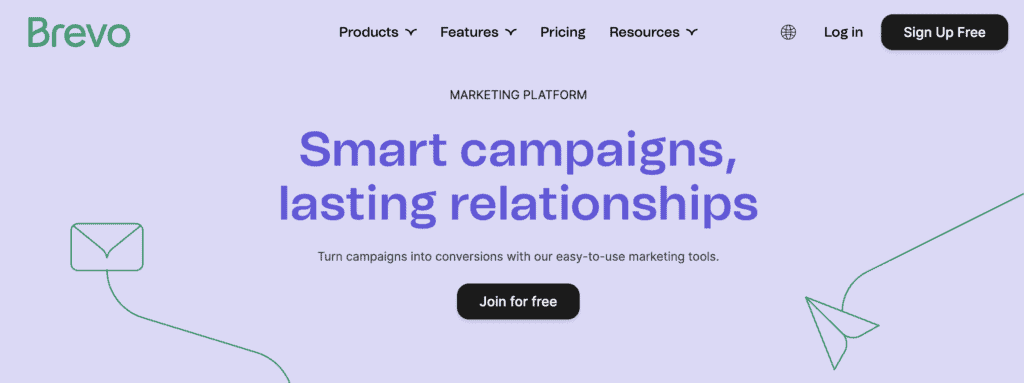
Maintaining high lead quality is paramount for any business aiming to optimize its sales process and accelerate growth.
When lead quality falters, the repercussions can significantly hinder operational efficiency and profitability. Here are some practical problems businesses face due to poor lead quality, and why it’s crucial to prioritize it:
- Increased Time to Understand the Customer: Low-quality leads often lack alignment with the business’s ideal customer profile, leading to increased time spent on understanding and qualifying each lead. This not only slows down the sales cycle but also diverts valuable resources from potential high-value interactions. As a business owner, it’s important to streamline the lead qualification process by focusing on high-quality leads that exhibit clear indicators of fit and intent.
- Negatively Impacts Productivity: Engaging with poor-quality leads can significantly drain your team’s productivity. Sales representatives may find themselves chasing leads with low conversion potential, resulting in wasted effort and decreased morale. By ensuring that only high-quality leads are passed to your sales team, you can maintain high productivity levels and ensure that their skills are utilized effectively towards closing deals.
- Increased Costs of the Sales Process: Every step of the sales process incurs costs— from initial contact to closing. Low-quality leads increase these costs as more time and resources are required to filter and nurture them, often without a corresponding increase in revenue. Maintaining high lead quality ensures that the resources allocated to the sales process are invested in leads that are more likely to convert, optimizing your ROI.
- Delays in Business Growth: Ultimately, the quality of leads impacts the overall growth trajectory of your business. Poor-quality leads can result in longer sales cycles, lower conversion rates, and unsatisfactory customer interactions, all of which delay business growth. High-quality leads, conversely, are more likely to result in successful conversions and long-term customer relationships, driving sustainable growth.
As a small business owner, it’s imperative to recognize the direct impact of lead quality on your business’s efficiency and growth.
By investing in processes and technologies that enhance lead quality, you not only improve your bottom line but also position your business for sustained success in a competitive marketplace.
How Do You Ensure Lead Quality Continuously?
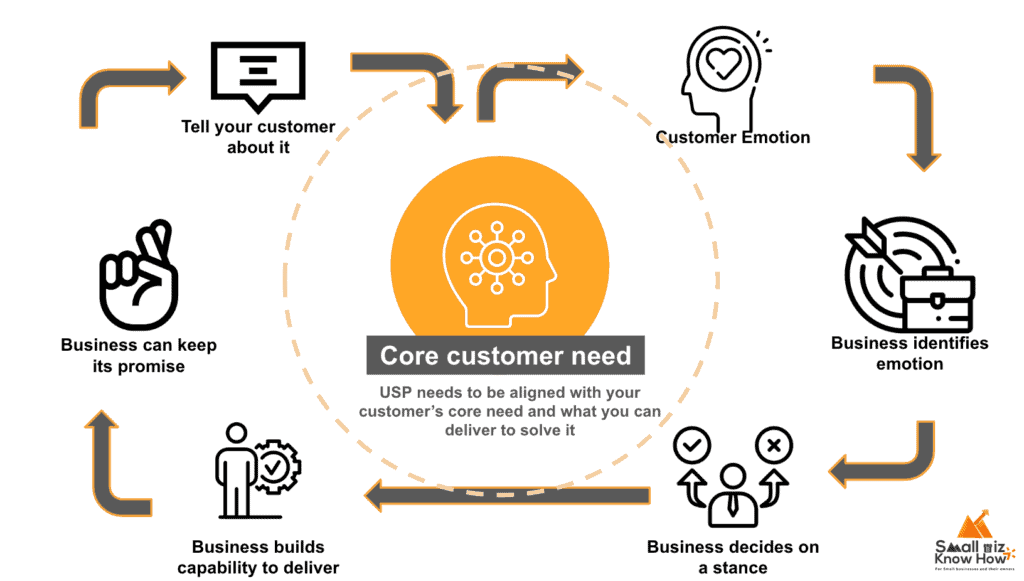
Ensuring continuous lead quality is a critical aspect of my strategy to maintain a robust pipeline and achieve sustained business growth.
Here’s how I approach the continuous improvement of lead quality by focusing on key customer data points and discerning customer intent:
Setting Guidelines on Identifying Customer Data Points: In my experience, the more specific the customer data collected, the better the lead quality. To this end, I sometimes design form fills to be deliberately comprehensive. While this may seem counterintuitive, as it could potentially reduce the number of overall responses, it serves a strategic purpose.
By asking for detailed information, I can effectively filter out casual browsers from serious prospects. This helps in segmenting leads based on precise criteria, such as their purchasing power, specific needs, and engagement levels.
Gauging Customer Intent Through Lead Magnets: To further refine lead quality, I utilize lead magnets, but with a strategic twist. Instead of requesting a slew of information upfront, I often ask only for an email ID. This minimal barrier to entry allows me to attract a broad audience.
However, the real insight into customer intent comes from monitoring how these leads interact with the content they receive thereafter. For example, those who engage deeply with specific topics or resources are showing a clear interest and potential readiness to purchase. This behavioral cue is crucial for prioritizing follow-up efforts.
Analyzing Behavioral Indicators: Beyond just data collection, I pay close attention to nuanced human behaviors. For instance, the time spent on critical pages of our website, the recurrence of visits, and interactions with high-value content are all indicative of a lead’s interest and intent.
By integrating these behavioral indicators into our CRM system, I can score leads more accurately and prioritize those with a higher likelihood of conversion.
Continuous Refinement of Processes: Lastly, ensuring lead quality is not a set-and-forget process. It requires constant refinement and adaptation based on feedback and evolving market conditions.
Regularly reviewing the lead generation and qualification criteria allows me to stay aligned with the most effective practices and ensures that the leads we pursue are the most likely to result in successful business outcomes.
By focusing on these strategic aspects, I effectively maintain medium to high lead quality, which is essential for driving efficient conversions and ultimately, fostering sustainable business growth.
Strategies to Identify and Improve Low-Quality Leads

Identifying and improving low-quality leads is as crucial as nurturing high-quality ones, as it helps streamline resources and focus efforts where they are most likely to yield results. Here’s how I approach this issue:
- Utilization of the Established Criteria Table: I refer back to the table of core attributes we previously discussed, which serves as a blueprint for evaluating lead quality. Each lead is assessed against these criteria—demographic fit, behavioral engagement, buying intent, budget alignment, decision-making power, fit with needs, and timeframe for purchase. This systematic evaluation helps in quickly identifying where a lead falls short.
- Identifying Gaps in Lead Information: When a lead doesn’t meet the criteria set in the table, the first step is to identify the gaps. For instance, if a lead shows weak buying intent or lacks decision-making power, these are immediate red flags. Leads missing critical demographic or budget alignment are also less likely to convert and thus categorized as low-quality.
- Segmentation of Low-Quality Leads: Once identified, I segment these low-quality leads into different buckets based on the nature of their deficiencies. This segmentation helps in applying targeted improvement strategies tailored to the specific weaknesses of each group.
- Enhancement Strategies:
- Educational Engagement: For leads lacking awareness or engagement, I implement targeted educational campaigns that provide valuable content to nurture their understanding and interest.
- Revised Communication: For those with unclear buying intent, I refine the communication strategy to include more direct inquiries about their needs and timelines, helping to clarify their intent.
- Additional Data Collection: For leads with incomplete profiles, I might initiate additional touchpoints to gather the necessary information. This could be through follow-up emails, more detailed forms, or direct interactions.
- Re-evaluation and Re-integration: After applying these enhancement strategies, these leads are periodically re-evaluated against the original criteria to see if their quality has improved. If a lead progresses and meets the established criteria, they are reintegrated into the standard lead nurturing process.
- Continuous Learning and Adaptation: The process of identifying and improving low-quality leads is iterative. I continuously refine my criteria and strategies based on the results of these interventions to ensure that the lead quality enhancement process is adaptive and responsive to changes in customer behavior and market conditions.
By diligently identifying, segmenting, and applying tailored strategies to low-quality leads, I work to convert potential missed opportunities into valuable prospects, thereby optimizing the effectiveness of our lead generation and nurturing efforts.
Segmentation: Tailoring Your Approach to Different Lead Types

I was focussed on B2B lead management in various capacities as head of sales operations. In this effort, recognizing the diversity of lead sources and tailoring strategies to suit different target customers is fundamental.
Each lead source brings its own set of challenges and opportunities, and understanding these can greatly enhance the effectiveness of your engagement efforts.
My Insights on Various B2B Lead Sources
Trade Shows and Industry Conferences: These events are goldmines for high-quality leads. The attendees are often decision-makers actively searching for solutions, making the leads garnered here particularly valuable.
My strategy involves immediate, personalized follow-up actions, often suggesting face-to-face meetings to capitalize on their high intent.
Webinars and Online Workshops: These digital platforms attract a mix of leads. Some attendees are just dipping their toes in the informational waters, while others are ready to dive deeper into specific solutions.
Post-event, I focus on continuing the education process with tailored content and invitations to upcoming webinars to nurture these leads at their respective stages.
Content Marketing (Blogs, White Papers, Case Studies): Here, leads are generally in the research phase, seeking to educate themselves about potential solutions.
I nurture these leads by providing a steady stream of relevant content, gradually guiding them toward more commitment-heavy interactions like consultations or product demos.
Social Media: Platforms like LinkedIn offer a broad spectrum of potential leads, from casual browsers to serious inquiries. My engagement strategy is highly interactive, utilizing direct messages and personalized content to foster relationships and gradually convert interest into intent.
Cold Outreach (Email and Calls): This method can be hit or miss, but with precise targeting and relevant messaging, it can yield substantial results. I ensure that every interaction provides value, establishing credibility and building trust over multiple touchpoints.
My Strategy Table for B2B Lead Segmentation
To help visualize how I tailor my strategies, here’s a reference table:
| Lead Source | Target Customer | Engagement Strategy |
|---|---|---|
| Trade Shows and Conferences | Decision-makers, high intent | Personal follow-up, meetings, detailed proposals |
| Webinars and Online Workshops | Educated leads, varying intent | Continued education, follow-up webinars |
| Content Marketing | Early-stage leads | Regular content delivery, gradual nurture |
| Social Media | Broad spectrum | Interactive, responsive engagement, personalization |
| Cold Outreach | Specifically targeted leads | Value-driven communications, follow-ups |
This table serves as a practical guide for myself and other B2B marketers. It reflects my understanding that different lead sources require bespoke strategies.
By adapting our approach to match the source and customer profile, we can improve lead conversion rates and ultimately, the success of our marketing efforts.
Enhancing Lead Acquisition: Techniques to Attract Quality Leads

Ensuring that bad leads are prevented from entering the sales funnel is crucial for maintaining efficiency and effectiveness in any lead acquisition strategy. Bad leads can clutter the funnel, waste resources, and ultimately detract from focusing on prospects who are genuinely interested and likely to convert.
More importantly, they can skew performance metrics and lead to misguided strategies based on flawed data.
To avoid the infiltration of bad leads into the funnel, one effective technique I employ is refining entry points.
For instance, instead of broad, generic calls to action, I design targeted content and offers that appeal specifically to the ideal customer profile. This might involve gated content that requires information that only serious prospects are likely to provide, such as specific business needs, company size, or role in the purchasing process.
This not only helps in collecting valuable data but also acts as a filter to discourage less relevant leads.
Another strategy is to use high-quality, precision-targeted advertising. By leveraging advanced targeting options provided by platforms like LinkedIn or Google Ads, I can focus my advertising spend on users who match the demographic and psychographic characteristics of my ideal customers.
This ensures that the leads generated are more aligned with our offerings, increasing the likelihood of conversion.
In addition, I emphasize the importance of continuous optimization of lead scoring models. By regularly updating the criteria and weights assigned to various lead behaviors and characteristics, I can more accurately identify which leads are most likely to become quality customers.
This involves analyzing engagement metrics, conversion rates, and feedback from the sales team to refine our definitions and expectations of what constitutes a ‘quality lead.’
Flipping the scenario to attract more good leads involves enhancing the quality of engagement at each touchpoint. Implementing nurturing campaigns that educate and build trust can help in progressively moving a lead from mere interest to a decision-ready state.
Regularly engaging with leads through personalized emails, offering webinars that address common pain points, and providing case studies or testimonials can significantly boost the perceived value of the relationship, encouraging high-quality leads to progress through the funnel.
By focusing on these strategies—targeted content, precision advertising, robust lead scoring, and continuous nurturing—I ensure that our lead acquisition efforts are not only efficient but also effective, bringing in leads that are truly beneficial to the business.
Using Analytics to Assess and Increase Lead Quality
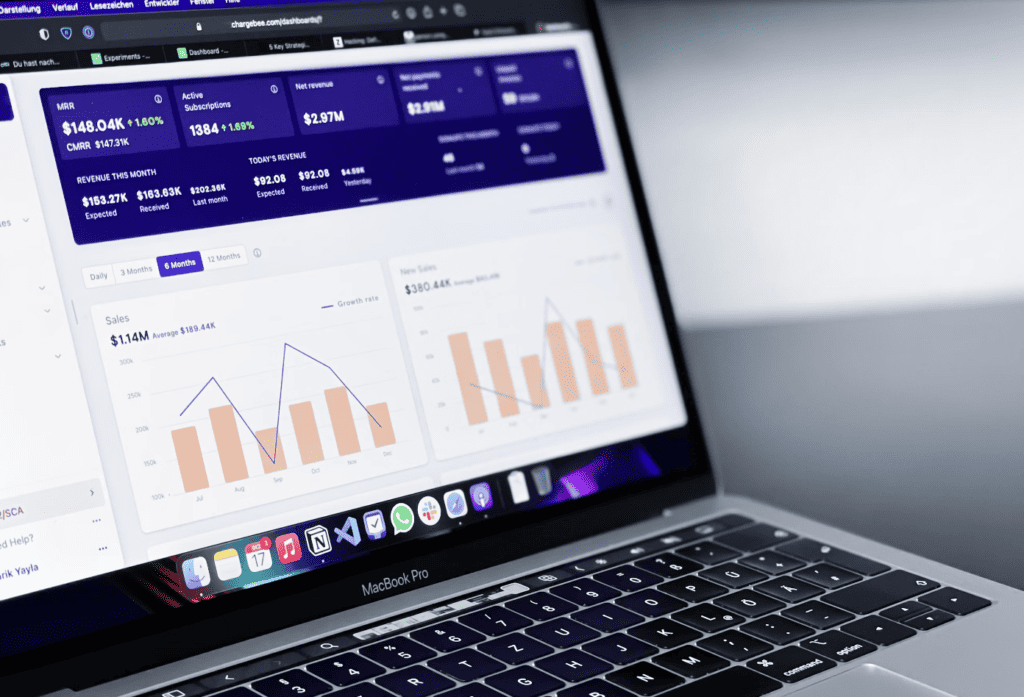
Using analytics to assess and increase lead quality is an essential practice, especially for small businesses looking to optimize their marketing efforts with limited resources.
One straightforward yet powerful metric that can significantly improve the understanding and management of lead quality is information completeness.
Information completeness refers to how much key information we have about each lead. This metric assesses whether the data collected from or about the lead covers all necessary fields that define a high-quality lead.
This could include details such as contact information, industry, company size, specific needs, decision-making authority, budget, and buying timeline.
Implementing Information Completeness as a Metric:
- Define Required Fields: Start by determining which data points are crucial for a quality lead in your specific industry and sales process. This might differ based on your product or service, but should typically include contact details, demographic information, and any specific qualifiers that relate to your sales and marketing strategies.
- Assess Current Leads: Evaluate your existing leads by checking how many of the defined necessary fields are filled. This can be done through your CRM system where fields can be marked as mandatory, allowing you to quickly see incomplete profiles.
- Set a Completeness Threshold: Decide on a threshold for what counts as a ‘complete’ lead profile. For example, you might consider a lead profile that has 80% of the key fields filled as ‘complete’. This threshold helps in segregating leads that need more information from those ready to be engaged actively.
- Use Analytics to Track Completeness: Implement analytical tools to routinely monitor the completeness of information across your lead database. This tracking can be set up as a dashboard that shows the percentage of complete versus incomplete profiles, highlighting areas where data collection needs improvement.
- Incorporate into Lead Scoring: Integrate information completeness into your lead scoring system. Leads that meet the completeness threshold receive higher scores, prioritizing them in the sales process.
- Automate Data Enrichment: Where possible, automate the process of data enrichment to fill in missing data points. Using tools that append data based on email addresses or social media profiles can significantly enhance the completeness of your lead information without requiring manual input.
Benefits for Small Businesses:
For small businesses, focusing on information completeness offers a clear, actionable way to improve lead quality without needing to dive into complex data analytics. It ensures that the sales team focuses their efforts on leads that are well-understood and likely more receptive, thus improving efficiency and conversion rates.
Moreover, this approach helps in maintaining a clean, useful lead database that supports better targeted marketing and personalized sales strategies.
By concentrating on this single metric, small businesses can step-by-step enhance their lead quality, making each marketing dollar count by focusing on more promising prospects.
Effective CRM Practices to Keep Lead Quality High
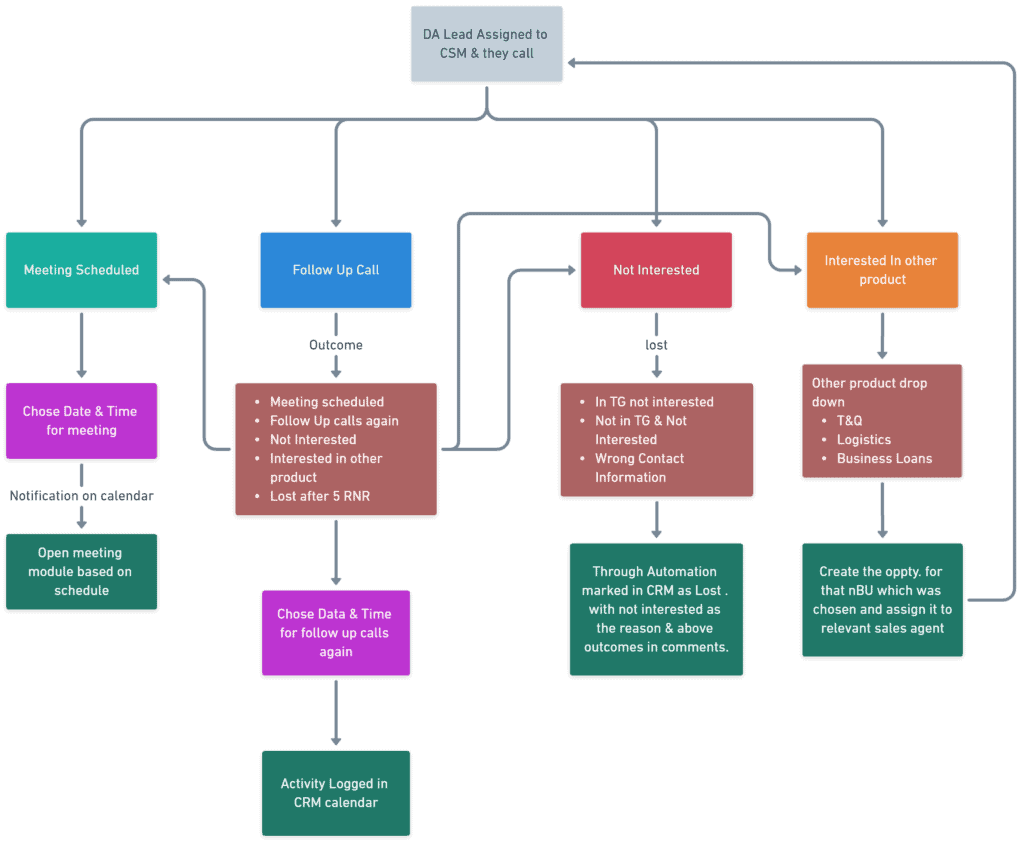
Effective Customer Relationship Management (CRM) practices are vital for maintaining high lead quality, a cornerstone for successful sales and marketing strategies, especially in today’s data-driven business environment.
The quality and integrity of data entered into a CRM system directly influence the accuracy of lead profiling and the effectiveness of subsequent engagement strategies.
Importance of Data Quality in CRM
The data collected and stored in your CRM must be accurate, comprehensive, and relevant. Poor data quality can lead to misguided decisions, ineffective campaigns, and ultimately, wasted resources. Therefore, implementing best practices to ensure high-quality data entry is critical.
Implementing Effective CRM Practices
- Mandatory Fields: One straightforward tactic is to make certain fields mandatory in the CRM when leads are being captured, especially by sales personnel. This compels the team to collect essential information before they can proceed. Fields such as contact details, lead source, industry, and specific needs should be standardized to ensure that every lead is evaluated with a complete dataset, enhancing the ability to qualify them accurately.
- Automated Data Enrichment: Integrating your CRM with external data sources and tools can dramatically improve the completeness and accuracy of your lead data. For instance, using the Google Location API can automatically populate geographical information based on the lead’s provided address, ensuring accuracy and saving time for your sales team.
- Social Media Aggregators: Integrating social media aggregator tools can automatically pull relevant social media data into your CRM. This includes professional details from platforms like LinkedIn, recent tweets, or Facebook posts related to business needs or interests. This not only enriches the lead profile but also provides deeper insights into the lead’s interests and current business challenges.
- Regular Data Audits: Regularly auditing the data within your CRM is crucial. This involves checking for outdated information, duplicates, and inconsistencies. Regular audits help maintain the CRM as a reliable, up-to-date source of lead information, which is crucial for making informed marketing and sales decisions.
- Training and Guidelines: Ensuring that all users of the CRM understand the importance of data quality is fundamental. Regular training sessions and clear guidelines on how to enter data help minimize errors and improve the overall quality of the data collected. This includes defining what constitutes a lead and when and how to update lead information.
Benefits of Maintaining High-Quality CRM Data
By maintaining rigorous standards for the data entered into your CRM, you can ensure that every lead is properly qualified and that the sales team is working with the best possible information.
This leads to more efficient targeting, more personalized engagement, and ultimately, higher conversion rates. High-quality CRM data also supports more accurate forecasting and planning, allowing businesses to allocate resources more effectively and strategically.
Basically, the effectiveness of a CRM system in maintaining high lead quality is largely dependent on the quality of data it contains.
Implementing strong CRM practices such as making certain fields mandatory, integrating with data enrichment tools, and conducting regular data audits are essential steps in ensuring that your CRM system remains a valuable asset in your lead management process.
Role of Content Marketing in Improving Lead Quality

Content marketing plays a pivotal role in enhancing lead quality by providing useful, tactical content that not only generates interest but also educates prospects, guiding them through the buying journey.
By delivering relevant and valuable content, businesses can attract a more targeted audience likely to have a genuine interest in their products or services.
Enhancing Lead Quality Through Content
Providing articles, whitepapers, blogs, and videos that solve common problems or answer key industry questions allows a business to position itself as a thought leader. This helps in building trust and credibility among potential customers.
For instance, a detailed guide on “How to Optimize Your Supply Chain” targeted at logistics managers can attract professionals actively seeking to improve their operations, ensuring that the leads generated are relevant and have a specific interest in supply chain solutions.
Gauging Purchase Intent from Engagement
Engagement behavior with the content provides crucial insights into the purchase intent. Metrics such as download numbers, time spent on pages, and interaction rates (like comments and shares) offer a window into how engaged a prospect is.
More nuanced indicators, such as returning to the site multiple times or viewing multiple pieces of content, suggest a deeper interest and a higher likelihood of progressing in the sales funnel.
Moreover, using advanced tracking tools like lead scoring systems integrated with marketing automation platforms can help quantify these behaviors, assigning scores based on specific interactions that indicate buying readiness.
For example, a prospect who downloads a whitepaper and then signs up for a webinar might receive a higher score than one who merely views a blog post.
In summary, content marketing is not just about attracting any leads but about attracting the right leads.
By consistently providing high-value content tailored to the needs of a defined audience and analyzing engagement patterns, businesses can significantly improve the quality of their leads and their chances of conversion.
Optimizing Email Marketing to Enhance Lead Relevance

Optimizing email marketing is a crucial strategy for enhancing lead relevance and improving the overall efficiency of sales conversions. By tailoring email content to the specific interests and behaviors of recipients, businesses can increase engagement and identify which prospects are most likely to convert.
Enhancing Lead Relevance Through Targeted Email Campaigns
Email marketing allows for personalized communication that can be finely tuned to match the preferences and needs of each recipient.
By segmenting email lists based on demographics, past purchasing behavior, engagement history, or even predicted interests, businesses can send highly relevant messages.
For example, sending specialized product recommendations to customers who have previously purchased similar items or providing additional resources on topics that a subscriber has shown interest in can significantly increase the relevance of the emails.
Using Lead Scoring to Gauge Engagement
To effectively gauge the engagement and intent of leads through email marketing, implementing a nuanced lead scoring system is essential. This system assigns points to leads based on their interactions with the emails. For instance:
- Opening an email might score lower, indicating initial interest.
- Clicking through to read a detailed article or watching a video linked within the email scores higher, suggesting more significant engagement.
- Actions like downloading a whitepaper or signing up for a demo through an email link score even higher, as these indicate a strong intent to explore the products or services further.
Advanced Tracking and A/B Testing
Additionally, advanced tracking measures and A/B testing can refine email marketing strategies over time. By testing different subject lines, email formats, content types, and sending times, marketers can identify what resonates best with their audience.
Tracking which variations lead to higher engagement and conversion rates enables marketers to continually optimize their emails, thereby enhancing lead relevance and quality.
Integrating Email Insights with CRM
Integrating these email engagement insights with CRM systems allows for a holistic view of each lead’s journey. This integration ensures that every interaction a lead has with email content is captured and factored into their overall lead score.
Such comprehensive profiling helps sales teams prioritize their efforts towards leads showing the most promise based on their email interactions.
Basically, optimizing email marketing to enhance lead relevance involves not only sending targeted, personalized messages but also meticulously scoring and analyzing lead behaviors to identify those with the highest potential for conversion.
This targeted approach ensures that marketing efforts are concentrated on nurturing the most promising leads, thereby increasing the efficiency and effectiveness of the sales process.
The Impact of Lead Nurturing on Lead Quality
Lead nurturing is a critical aspect of my marketing strategy, significantly enhancing lead quality by developing meaningful connections with potential customers over time.
A good nurturing campaign weaves a compelling narrative that resonates with prospects at every stage of their buying journey, effectively embedding my brand in their minds as a trusted resource.
In crafting my campaigns, I focus on creating a story that builds upon itself with each interaction. The initial touch might be an educational email addressing a common industry challenge, followed by deeper insights or case studies in subsequent communications.
This not only helps in positioning my brand effectively but also ensures that each interaction adds value, enhancing brand recall and esteem.
Nurturing is a powerful tool for building awareness and cultivating purchase intent gradually. Through consistent and engaging content, I guide prospects from awareness to consideration and toward the decision stage, significantly increasing the likelihood of conversion.
Even if a sale doesn’t immediately materialize, a well-nurtured lead is more likely to return when ready to buy or recommend my brand to others.
By leveraging marketing automation tools, I personalize interactions at scale, ensuring the right message reaches the right person at the right time, making each touchpoint feel uniquely tailored and directly relevant.
This strategy not only aims for immediate sales but fosters long-term relationships, setting the stage for ongoing business engagements.
Refining Your Sales Lead Funnel to Filter and Upgrade Leads
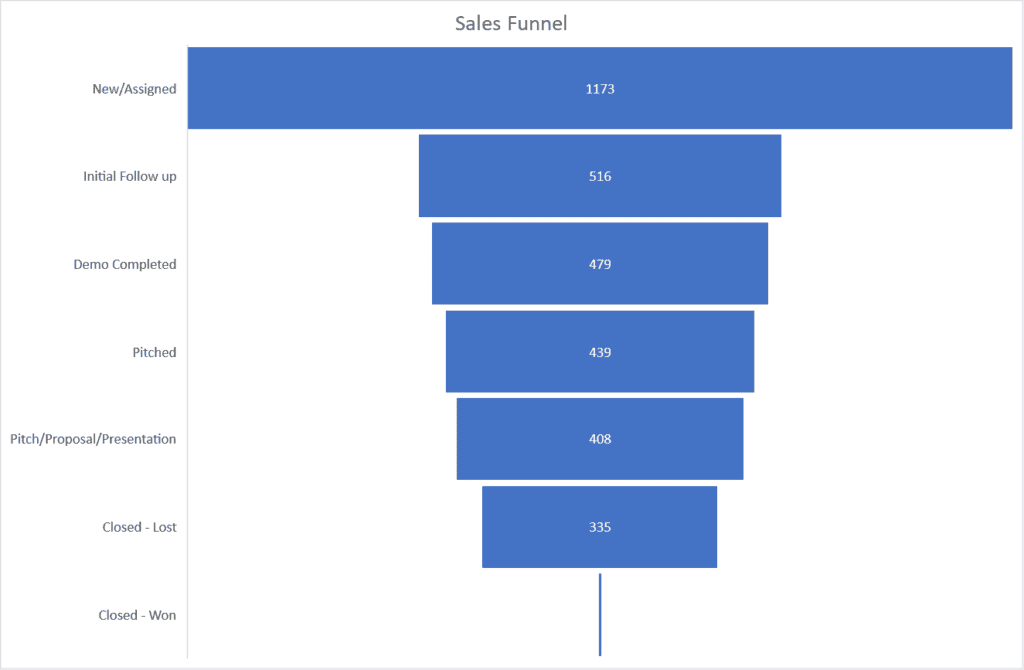
Refining the sales funnel to effectively filter and upgrade leads is a crucial strategy that impacts both the efficiency and the success rate of the entire sales process.
The quality of leads entering the funnel directly influences how smoothly they move through to conversion, which, in turn, affects the overall health of the sales pipeline.
Impact of Lead Quality on the Sales Funnel
High-quality leads typically progress through the sales funnel more smoothly, showing higher engagement levels, better response rates, and ultimately, a higher likelihood of closing deals.
Conversely, poor-quality leads can clog the funnel and waste time for the sales person in sifting through and skewing performance metrics with low conversion rates.
This makes it imperative that I continuously refine the design of my sales funnel to improve lead quality at each stage.
Designing the Sales Funnel to Impact Lead Quality
To optimize the sales funnel for better lead quality, specific stages must be designed as checkpoints where lead quality is assessed and, if necessary, re-qualified. These stages include:
- Lead Entry Point: The very top of the funnel where leads are gathered. Here, it’s crucial to ensure that the criteria for entering the funnel are strict enough to filter out unqualified leads right from the start.
- Lead Nurturing Stage: After initial contact, leads are nurtured with informational content and interactions that gauge their interest and fit. This stage is critical for observing lead behavior and engagement, which are indicators of lead quality.
- Qualification Stage: Before leads are passed on to sales, they undergo a qualification process where specific criteria must be met. This is a crucial checkpoint to assess the completeness of lead information, their budget, decision-making authority, and real interest in the product or service.
- Conversion-Readiness Check: Just before the final sales pitch or demo, leads should be evaluated for their conversion readiness. This involves checking if they have progressed appropriately through the nurturing stage and are genuinely interested in making a purchase.
Refining Checkpoints to Enhance Lead Quality
Each checkpoint is an opportunity to refine the lead’s profile and ensure that only the most qualified are advanced to the next stage.
For instance, using automated scoring systems at the lead entry point helps in filtering out leads that do not meet basic engagement criteria. During the nurturing stage, I employ progressive profiling—where additional information is gradually collected—to enrich lead data and further qualify them.
Incorporating feedback mechanisms at each stage also allows for continuous improvement of the funnel. For example, feedback from the sales team about lead quality can inform adjustments in lead scoring models or the refinement of the criteria used at the entry point.
Ultimately, designing a sales funnel with clear checkpoints and criteria for assessing lead quality not only improves the efficiency of the sales process but also ensures that resources are invested in leads that are most likely to convert, thereby boosting the overall performance and ROI of sales efforts.
Training Your Team on the Importance of Quality Leads
Training sales teams on the importance of quality leads over quantity can fundamentally shift their approach and improve their overall performance.
Here’s a simple tutorial I often use to illustrate why focusing on fewer, higher-quality leads can be more beneficial than chasing a larger volume of mediocre leads.
Training the team: Quality vs. Quantity in Lead Management
Imagine a salesperson has a monthly quota to generate $100,000 in revenue. Let’s compare two scenarios: one where they pursue a large volume of leads with a lower conversion rate and another where they focus on a smaller number of high-quality leads with a higher conversion rate.
Scenario 1: High Volume, Low Quality
- Total Leads: 200
- Conversion Rate: 5% (typical of lower quality leads)
- Average Deal Size: $1,000
Scenario 2: Lower Volume, High Quality
- Total Leads: 80
- Conversion Rate: 20% (typical of high-quality leads)
- Average Deal Size: $1,250 (often, high-quality leads result in higher-value sales due to better alignment of needs)
Calculations
- Scenario 1:
- Leads Converted = 200 leads * 5% = 10 sales
- Total Revenue = 10 sales * $1,000 = $10,000
- Scenario 2:
- Leads Converted = 80 leads * 20% = 16 sales
- Total Revenue = 16 sales * $1,250 = $20,000
Comparison Table for both scenarios
| Metric | Scenario 1: High Volume, Low Quality | Scenario 2: Lower Volume, High Quality |
|---|---|---|
| Total Leads | 200 | 80 |
| Conversion Rate | 5% | 20% |
| Average Deal Size | $1,000 | $1,250 |
| Leads Converted | 10 | 16 |
| Total Revenue | $10,000 | $20,000 |
Key Takeaways
This tutorial demonstrates that while the salesperson in Scenario 2 worked with fewer leads, the focus on quality not only allowed them to surpass their sales quota but also to do so with less effort per sale compared to Scenario 1.
The higher conversion rate and larger deal size associated with quality leads mean more efficient sales processes and potentially higher commissions.
In training sessions, I emphasize that understanding the characteristics of quality leads and efficiently managing them should be a priority.
This involves recognizing the signs of a strong lead, such as clear need, budget authority, and readiness to purchase, and focusing energy on nurturing these high-potential prospects.
Training the sales team to prioritize lead quality over quantity can significantly enhance their productivity and success rates, leading to better fulfillment of sales quotas and overall business growth.
Case Studies: Successful Strategies in Lead Quality Improvement

In my journey to refine lead quality for our SaaS product—designed to identify new business opportunities through tenders—the target customer profile proved to be particularly nuanced.
We aimed to reach companies within the building and construction industry, specifically those with revenues between $1M and $5M, as they would derive the most value from our product.
Context and Challenges
Initially, we experimented with a variety of lead generation sources, including paid advertising, Outbound calling, social media marketing, trade shows and events, and organic content through SEO.
The goal was to determine which sources not only brought in the most leads but which consistently delivered high-quality leads that converted into sales.
Strategic Pivot
It soon became apparent that not all sources were equal in their effectiveness:
- Paid advertising and social media brought in volume but lacked in lead quality and had higher costs per lead.
- Outbound calling was time-intensive and did not yield the desired conversion rates.
However, two sources stood out:
- Trade Shows and Events: These provided direct access to decision-makers in the target industry. The interactions were highly engaging, allowing for detailed discussions that showcased the direct benefits of our SaaS product.
- Organic Content & SEO: Content that addressed specific industry challenges related to tenders resonated well with our audience. The leads generated from SEO efforts showed high engagement and better conversion rates as they had actively sought out solutions we provided.
Focused Approach and Results
Realizing the potential of these two effective channels, I made the strategic decision to pivot our resources to primarily focus on trade shows and events and bolstering our SEO and content strategy.
This pivot was based on clear metrics that demonstrated higher conversion rates and lower costs per lead from these sources.
Comparative Data Table
| Lead Source | Leads Generated | Conversion Rate | Cost per Lead | Effectiveness |
|---|---|---|---|---|
| Paid Advertising | 500 | 2% | $50 | Low |
| Social Media | 300 | 3% | $40 | Medium |
| Outbound Calling | 200 | 1% | $75 | Low |
| Trade Shows & Events | 150 | 15% | $130 | High |
| Organic Content & SEO | 400 | 12% | $20 | High |
Outcome
By focusing on trade shows and organic content, we not only improved the lead quality but also saw a notable increase in revenue and a reduction in acquisition costs.
The targeted approach allowed us to better allocate our marketing budget and efforts, leading to more sustainable growth and a stronger market position.
Basically, this case study reflects the importance of understanding and adapting to the nuances of your target audience.
By aligning our lead generation strategies with the most effective sources, we managed to not only meet but exceed our sales goals while optimizing our marketing spend. This experience underscored the value of quality over quantity in lead acquisition for niche B2B products.
